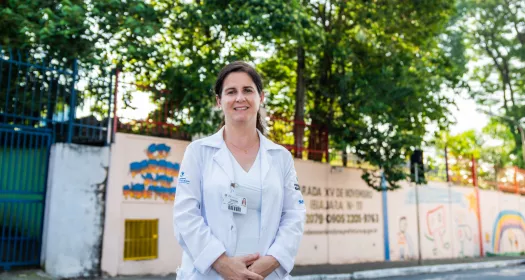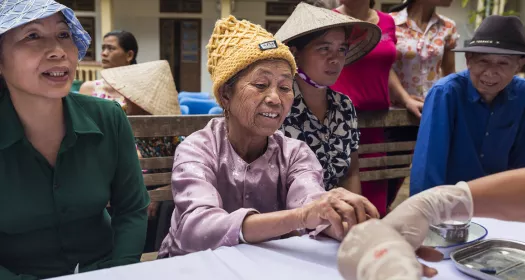The entire global health community talks about innovation. But, are we clear about what we mean and what type of innovation is most needed to achieve universal health coverage?
There has been an explosion of healthcare innovations designed to improve peoples’ life in recent decades, such as new therapies and medical devices. These have significantly improved health outcomes and life expectancy. However, today’s unprecedented global health challenges, including the unfinished agenda of infectious diseases, the constant threat of emerging outbreaks, the rising tide of noncommunicable diseases (NCDs), and growing health inequities due to rapid urbanization, all demand that we reengineer the way healthcare is delivered and health systems are organized.
Put simply, to ensure more people can access proven therapies and healthcare solutions, we need to find innovative ways to deliver them.
This idea has been gaining momentum in recent months. Leaders such as Angela Merkel, Bill Gates and World Health Organization Director-General Tedros Adhanom Ghebrey all shared this message at the most recent World Health Summit. In Dr Tedros’ words: “We need innovation and disruption – not just for developing new products, but for developing new ways of delivering those products.”
Simple solutions work
Innovating healthcare delivery with the help of simple technology has been a guiding principle for the Novartis Foundation initiatives in recent years. Two initiatives – one in Ghana and one in Vietnam – are significantly increasing blood pressure control rates by bringing hypertension care and services closer to the community. Empowering local shops and businesses such as hair salons to offer blood pressure screening has very positive results. Not only does it improve health outcomes; it also reduces the strain on overburdened health systems and gives more responsibility to patients for managing their own health.
Basic digital technology is the glue that then connects screening points outside the health system with qualified health providers, and enables coordinated care for patients.
When the shopkeepers measure blood pressure, the results automatically transfer into the digital system, connecting people who screened positively with healthcare providers who provide diagnosis and ongoing care. Digital technology also supports the health providers’ decision-making, while SMS alerts help patients self-manage their condition through reminders about diet, exercise and medication. The success of these Novartis Foundation initiatives convinced the Ghana and Vietnam governments to integrate the new health service models into national health policy, and now apply them in their capital cities.
Another example of simple digital health technology reaching scale is the telemedicine initiative we developed with the Ghana Health Service and Ministry of Health. This simple model connects community health workers via mobile phone to doctors, nurses and midwives in a teleconsultation center, who can coach them on patient care. It was so successful that the government transformed it into a national telemedicine service that now covers about seven million people. The Novartis Foundation also developed a telemedicine toolkit, for use by other communities who want to implement similar innovative health services.
We hope the successes of our initiatives inspire others to reimagine the way care can be delivered. Bringing care closer to the people and leveraging existing digital technology are the most powerful tools we currently have against the rising burden of NCDs and the other global health challenges.
I’d love to hear your own examples and ideas for innovating healthcare delivery!






